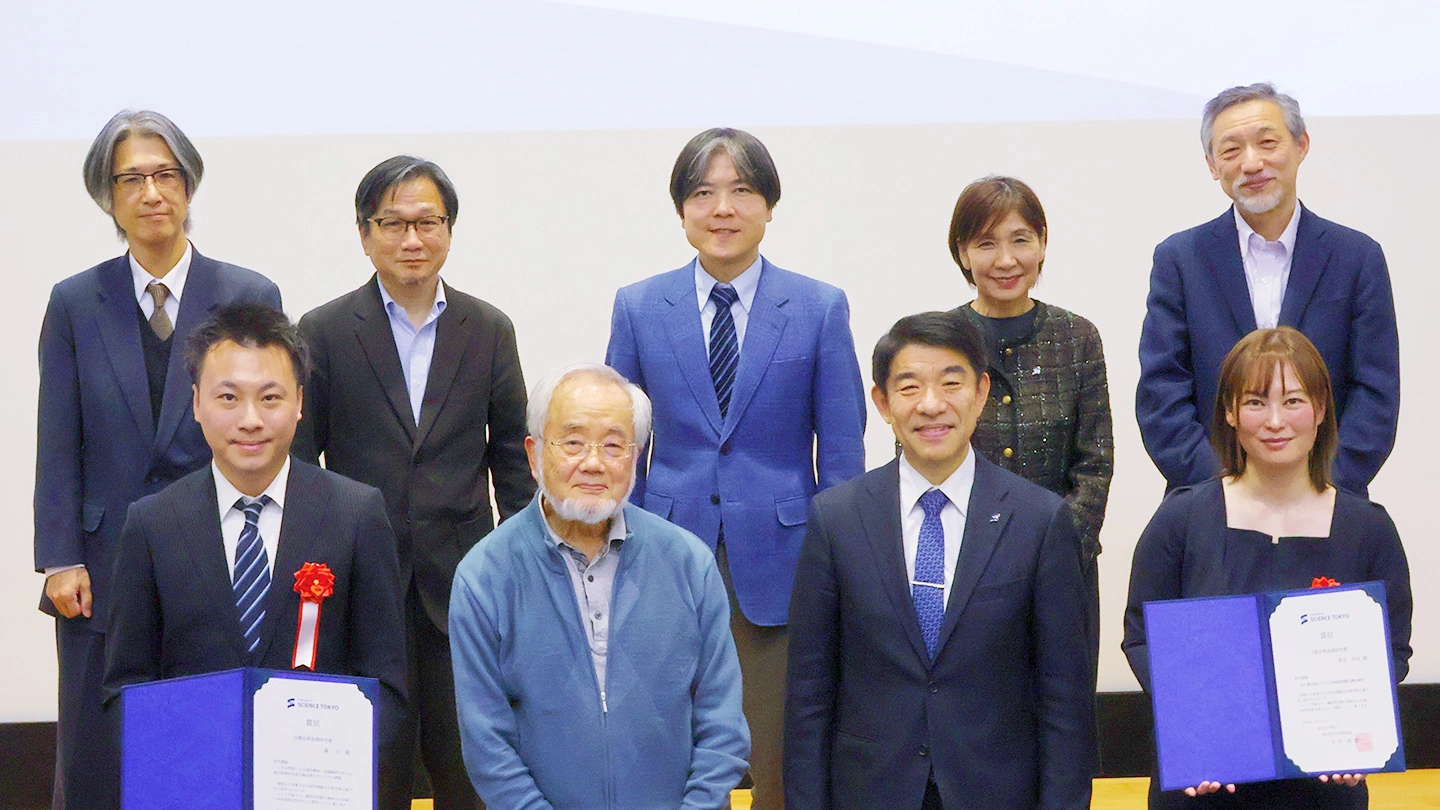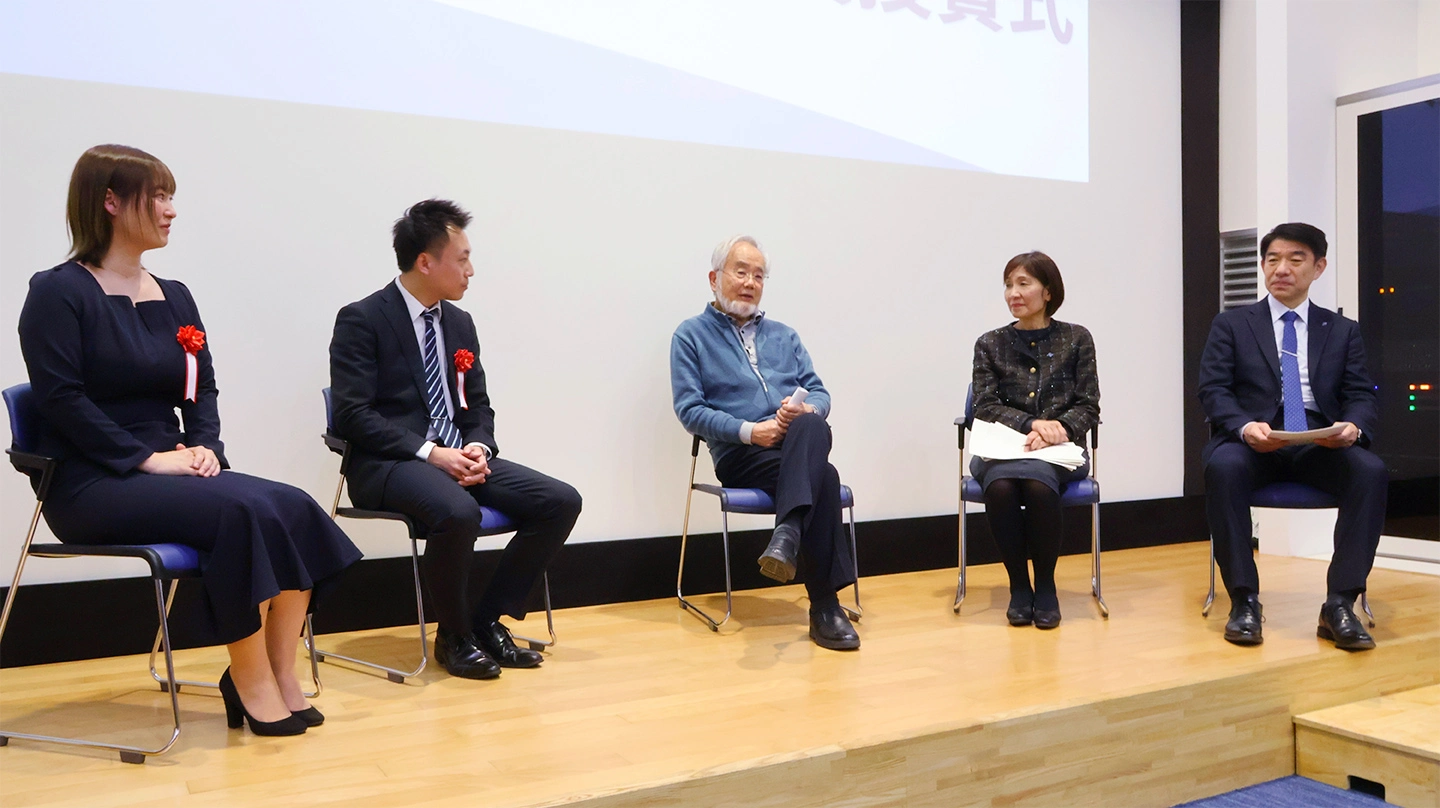2024 Yoshinori Ohsumi Award for Fundamental Research Awarded to Two Researchers
Two researchers received the 2024 Yoshinori Ohsumi Award for Fundamental Research, financial support from Institute of Science Tokyo for researchers under the age of 40 engaged in fundamental research. The award ceremony was held on February 13, 2025.

Yoshinori Ohsumi Award for Fundamental Research is designed to provide research funds for exceptionally talented young researchers engaged in fundamental research that requires a long-term perspective. Two researchers were awarded as FY 2024, the 7th award counting from its predecessor " Yoshinori Ohsumi Fund for Fundamental Research".
During the ceremony, President and Chief Executive Officer Naoto Ohtake explained Science Tokyo’s support initiatives for fundamental research to the award winners, and Honorary Professor and 2016 Nobel laureate in Physiology or Medicine Yoshinori Ohsumi delivered a congratulatory speech. The award winners, Ohtake, screening panel members including Executive Vice President for Research and Industry-Academia-Government Collaboration Mutsuko Hatano, and Ohsumi later enjoyed conversation during which they actively exchanged opinions regarding topics such as current research themes of the award winners.

FY2024 Award Winners
Associate Professor Jiang Pu
Department of Physics, School of Science
Research Topic:Room-temperature electrically-tunable 2D material chiral light-emitting devices withnear-unity efficiency and polarization
As the next-generation information and communication technology of the Internet/information society, it is expected that optical quantum communication, which converts the quantum state of photons and electrons. Specifically, information processing is performed by converting the quantum state of photons, circular polarization, and the spin of electrons, thus a light source that can electrically control circular polarization is required as a core device. In this research, we aim to create a high-performance circularly polarized light-emitting device using two-dimensional materials, called transition metal dichalcogenides. In particular, we develop a method to electrically generate circularly polarized light emission by controlling the quantum state derived from the peculiar crystal symmetry of two-dimensional materials using the strain effect. In addition, by combining electrochemical device techniques and chemical light-emission engineering, we attempt to realize a circularly polarized light-emitting device with near-unity polarization and efficiency at room temperature. The results based on this research will contribute to the establishment of the fundamental properties, functionality, and device technologies for a chiral light source toward to future photon quantum communication technology.
Specially Appointed Assistant Professor Hiroka Sugai
Research Center for Autonomous Systems Materialogy, Institute of Integrated Research
Research Topic:Structural Analysis of Quadruplex-Forming Oligonucleotides in a Biomolecular Condensate
Liquid–liquid phase separation of biomolecules, a phenomenon where the assemblies of proteins and nucleic acids form liquid-like compartments, has recently drawn significant attention for its crucial role in cellular functions. This study focuses on "quadruplexes," unique secondary structures found in both DNAs and RNAs. It aims to explore the supramolecular structure of phase-separated droplets containing quadruplexes to uncover deeper insights into how these structures and liquid–liquid phase separation contribute to biological processes. These findings could inspire innovative approaches for regulating critical cellular functions in the future.
Related links
Update history
- This article was updated on May 16, 2025.
Contact
Research Planning Division
Research Promotion Department
Email awards.rpd@adm.isct.ac.jp